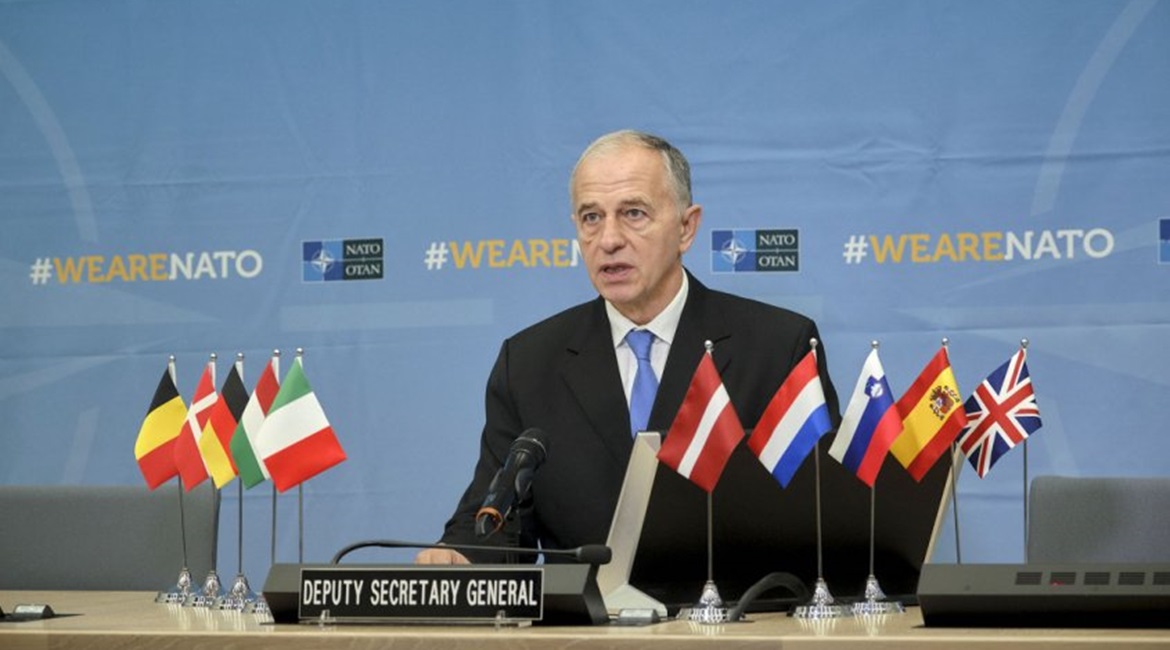
NATO defence ministers launched co-operation projects on ground-based air defence (GBAD) and rapidly deployable mobile counter-rocket, artillery, and mortar (C-RAM) capabilities during a virtual ministerial meeting held on 22–23 October, the alliance announced on its website on the second day of the meeting.
Both signings were conducted during virtual ceremonies on 23 October, with the C-RAM letter of intent (LOI) signed by the defence ministers of Germany, Greece, Hungary, and the United Kingdom; and the GBAD LOI signed by the defence ministers of Belgium, Denmark, Germany, Hungary, Italy, Latvia, the Netherlands, Slovenia, Spain, and the United Kingdom.

NATO Deputy Secretary General Mircea Geoană presided over the signing of LOIs on HVPs on GBAD (pictured) and C-RAM on 23 October. (NATO)
The GBAD high visibility project (HVP) aims to deliver innovative, modular, and scalable solutions to equip the signatories and create threat-tailored multinational GBAD force packages covering the entire spectrum from very-short to medium range up to 50 km. NATO Deputy Secretary General Mircea Geoană, who presided over both signing ceremonies, expected this approach to ”result in a dramatic increase in operational flexibility, scalability, and interoperability among ground-based air defence forces”.
The C-RAM LOI launched an HVP to investigate options for the development and procurement of rapidly deployable mobile capabilities, focusing on innovative solutions like directed-energy weapons. Geoană said the C-RAM initiative ”will significantly increase capacities to conduct high-intensity operations, while enhancing the protection of personnel, facilities, and equipment from rocket and mortar artillery attacks, and conventional air threats”.
Looking to read the full article?
Gain unlimited access to Janes news and more...






